Family : Dryophtoridae

Text © Prof. Santi Longo

English translation by Mario Beltramini
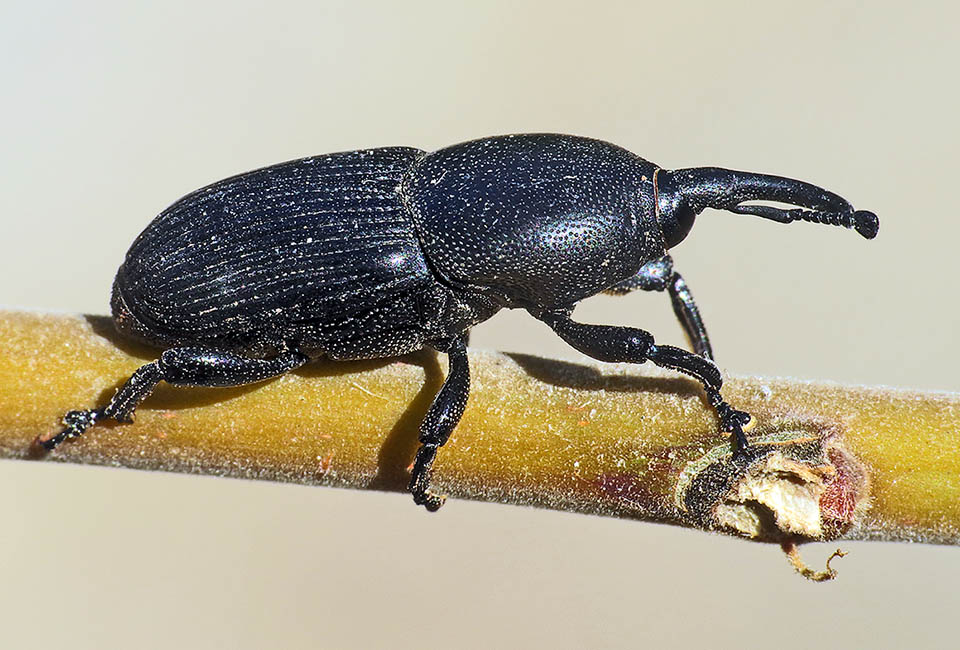
The Black weevil (Schyphophorus acupunctatus) was introduced in 1991 from Central America in Dutch greenhouses with plants of Dracena and Beucarnea © Simon Oliver
The Black weevil, Scyphophorus acupunctatus Gyllenhal, 1838, is a beetle of the family Dryophtoridae of the superfamily Curculionoidea that, with more than 60.000 described species, is the largest systematic grouping of insects. The adults are immediately recognizable due to the more or less long head forming a rostrum.
The name of the genus Scyphophorus, as reported by Gyllenhal in the protologue, of the description of the species comes from the combination of the Greek terms “σκύφος” (skyphos), cup, and “φορος” (phoros), carrying, with reference to the club slightly grooved. The specific term acupunctatus, assigned by Gyllenhal, refers, in Latin, to the minute dotting present on the integument of the adults of this species
Zoogeography
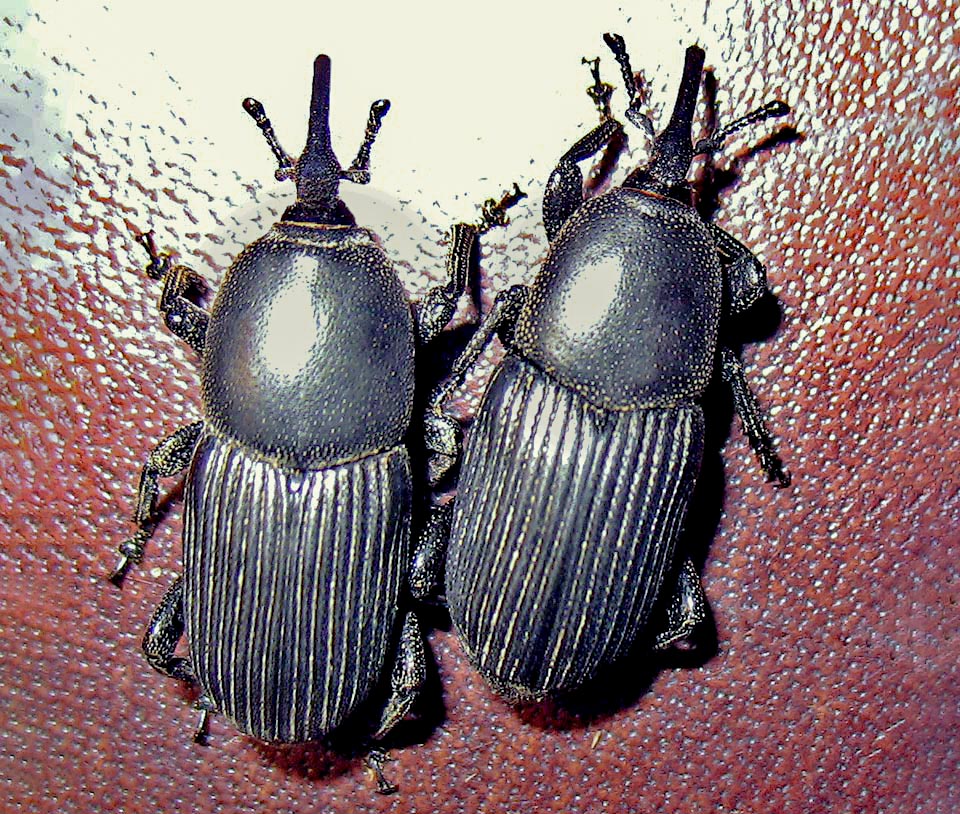
A couple. The male, left, is slightly longer and bigger than the female © Santi Longo
The species, believed to be original to central America, has been introduced from Mexico, especially in the arid tropical areas probably with Agave sisalana grown for the production of fibre.
Nowadays Scyphophorus acupunctatus is diffused in South and North America, in Asia, Oceania and Africa. It has been introduced in Europe in 1991 in Dutch greenhouses with ornamental plants, and in 1998, in North Italy. In 2006 it was found in open fields on agaves in Sicily, presently it’s spread also in Sardinia and in the southern regions of the Italian peninsula. In the west it has settled in many sites of the French Riviera and of the Iberian peninsula. It is also present in the eastern coast of the Mediterranean where have naturalized, or are grown, several species of the genus Agave, spontaneous and cultivated, as well as of the genera Dracena, Dasyliron, Beucarnea, Polianthes.
Morphophysiology
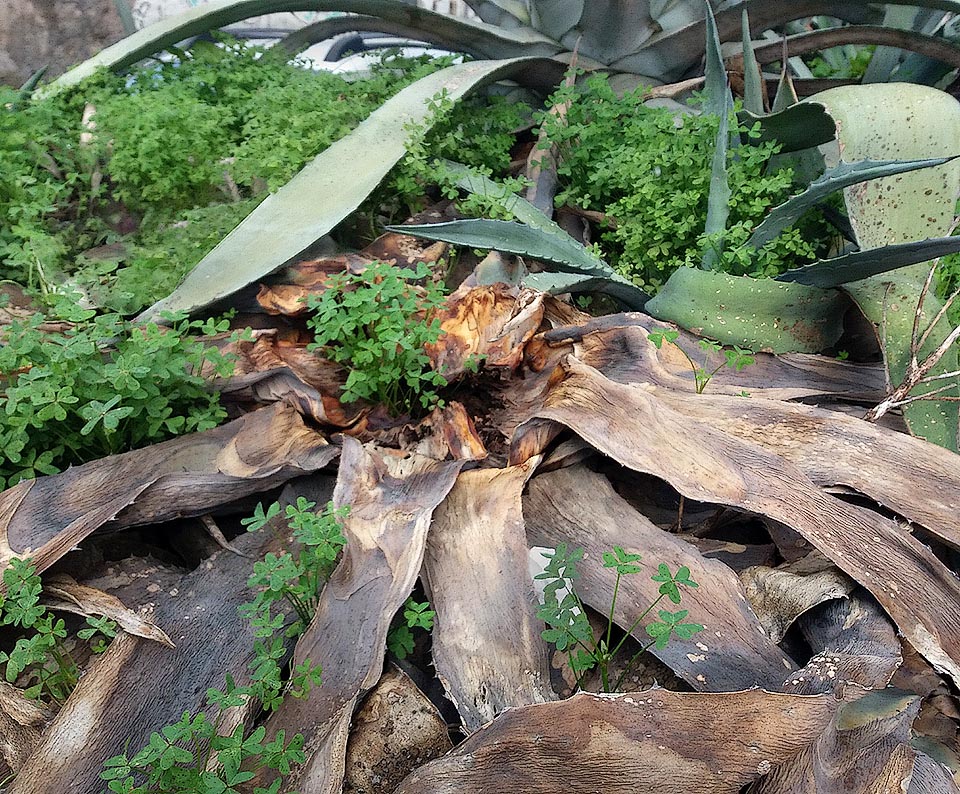
Scyphophorus acupunctatus has become a serious threat to agaves, devoured by the numerous larvae born from eggs laid with a small hole in basal leaves © Santi Longo
The male and female adults are quite similar; they have the body dark brown tending black, with purplish or bluish metallic reflections. The difference of the sexes can be evidenced by the convexity of the ventral part of the first segment as well as by the shape of the pygidium of the males. The length of the body varies from 10 to 19 mm, with an average of 18,37 mm in the males and 17,92 mm in the females. The head is on average 5,22 mm long compared to 5,12 of the females. The eyes, big and long, are in contact below.
The extension of the head, improperly called rostrum, is slightly curved, ventrally grooved with two keels and along the sides are inserted the antennae at the end of the rostrum stand the appendages of the masticatory mouthparts. The pronotum is oblong; the mesothoracic wings, or elytra, are grooved and finely dotted. They are joined together and therefore the insect, that cannot fly, moves only by walking. The eggs of Scyphophorus acupunctatus are about 1,5 mm long with a diameter of 0,7 mm; they have thin chorion, of hyaline colour when freshly laid.
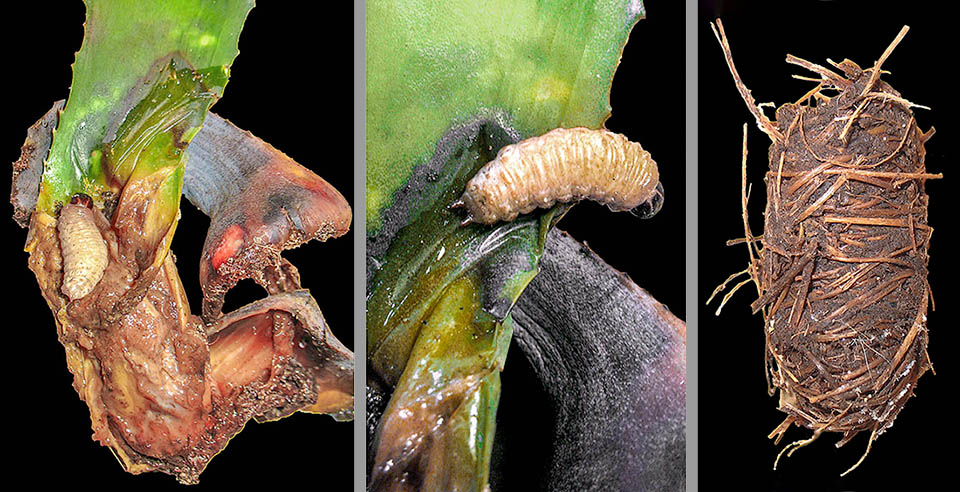
Larva nourishing of a leaf. Mature larva that does not feed and gets ready to build the pupal chamber, right, where the metamorphosis takes place © Santi Longo
The freshly cracked eggs the larvae measure about 3 mm, and in their last age are on average 25 mm long. The curved body, of cream white colour, are, if legless, apodal, when the body is well developed, encephalic. The back of the first segment of the thorax is glossy yellow.
Three dorsal folds are present in the abdomen. The rear margin of the ninth abdominal segment presents two projections longer than wide, each of which has 3 elongated bristles. When mature, they do not feed, they take shelter in plant organs or in the soil and with vegetable fibres they build about 25 mm long pupal chambers where they carry out the metamorphosis.
The pupae of Scyphophorus acupunctatus are about 20 mm long, with free appendages; initially of isabelline colour, they gradually become darker that are called exarate, from the Latin “exaratus” (plowed, dug) have antennae, buccal appendages, legs and wings individually separated by the pupal integument adhering like a glove.
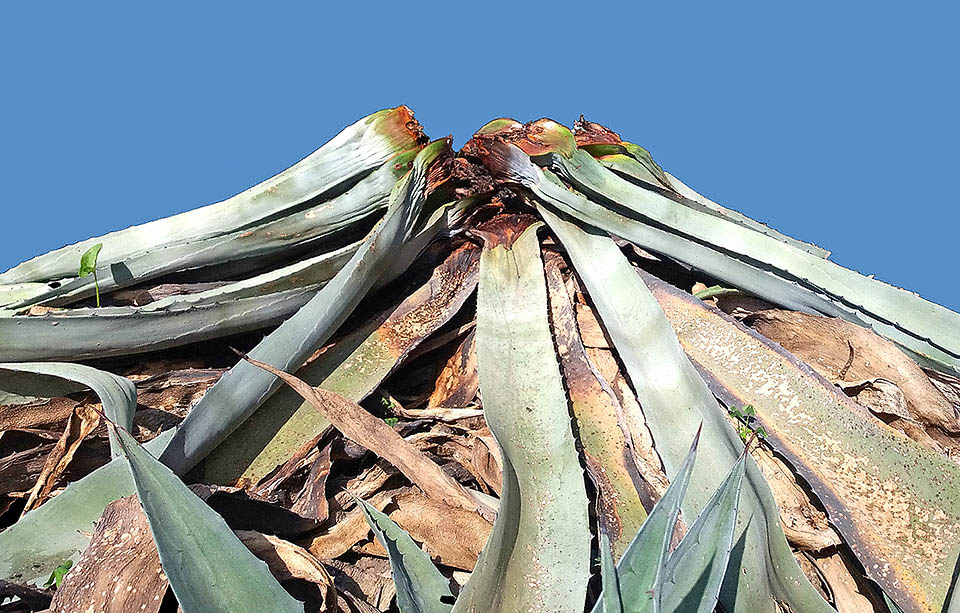
Agave americana with collapsed vegetative apex due to the trophic larvae activity, vector of the pathogen Erwinia carotovora that causes tissues to rot © Santi Longo
Ethology-Reproductive Biology
In the tropical zones the species has a continuous development, homodynamic, and develops one generation in 60-90 days with overlapping of the various biological stages. In Sicily, on open air agaves, one generation occurs in a period variable from 120 to 150 days with simultaneous presence of all biological stages during the year. In the heated greenhouses, on Dracena, Scyphophorus acupunctatus is able to complete up to 4 annual generations.
The males are attracted by the volatile compounds freed by the old or suffering from various causes plants, and once arrived, emit the aggregation pheromone that attracts virgin males and females that colonize the substratum accelerating the plants decline. The females, for nourishing and ovipositing, make with the rostrum small holes in the leaves.
The newborn larvae move towards the inner part of the leaves and in the vegetative apex of the plants feeding incessantly and, when mature, increase approximately 10 times the length of the body.
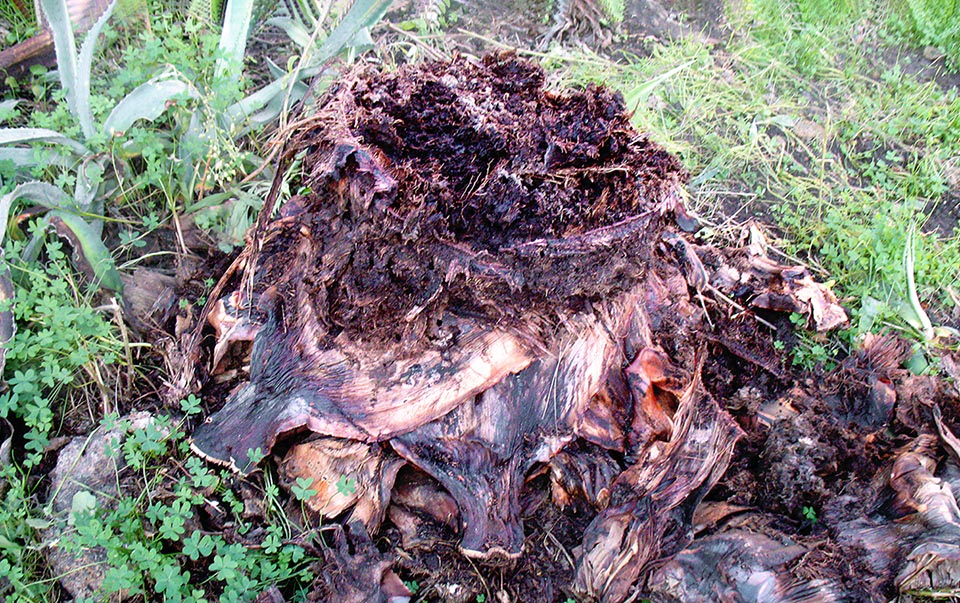
These are the agave remains. The sad outcome with the decomposition of a splendid ornamental plant © Santi Longo
The trophic activity of the larvae causes considerable damage to the ornamental host plants as happens for some species of palms with the Red Palm weevil (Rhynchophorus ferrugineus). Moreover, the Black weevil is considered as a vector of pathogens and in particular of the Agave bacteriosis, sustained by Erwinia carotovora.
Synonyms
Rhyncophorus asperulus Le Conte, 1857; Scyphophorus anthracinus Gyllenhal, 1838; Scyphophorus iterstitialis Gyllenhal, 1838; Scyphophorus robustior Horn, 1873.
→ For general notions about Coleoptera please click here.
→ To appreciate the biodiversity within the BEETLES please click here.
